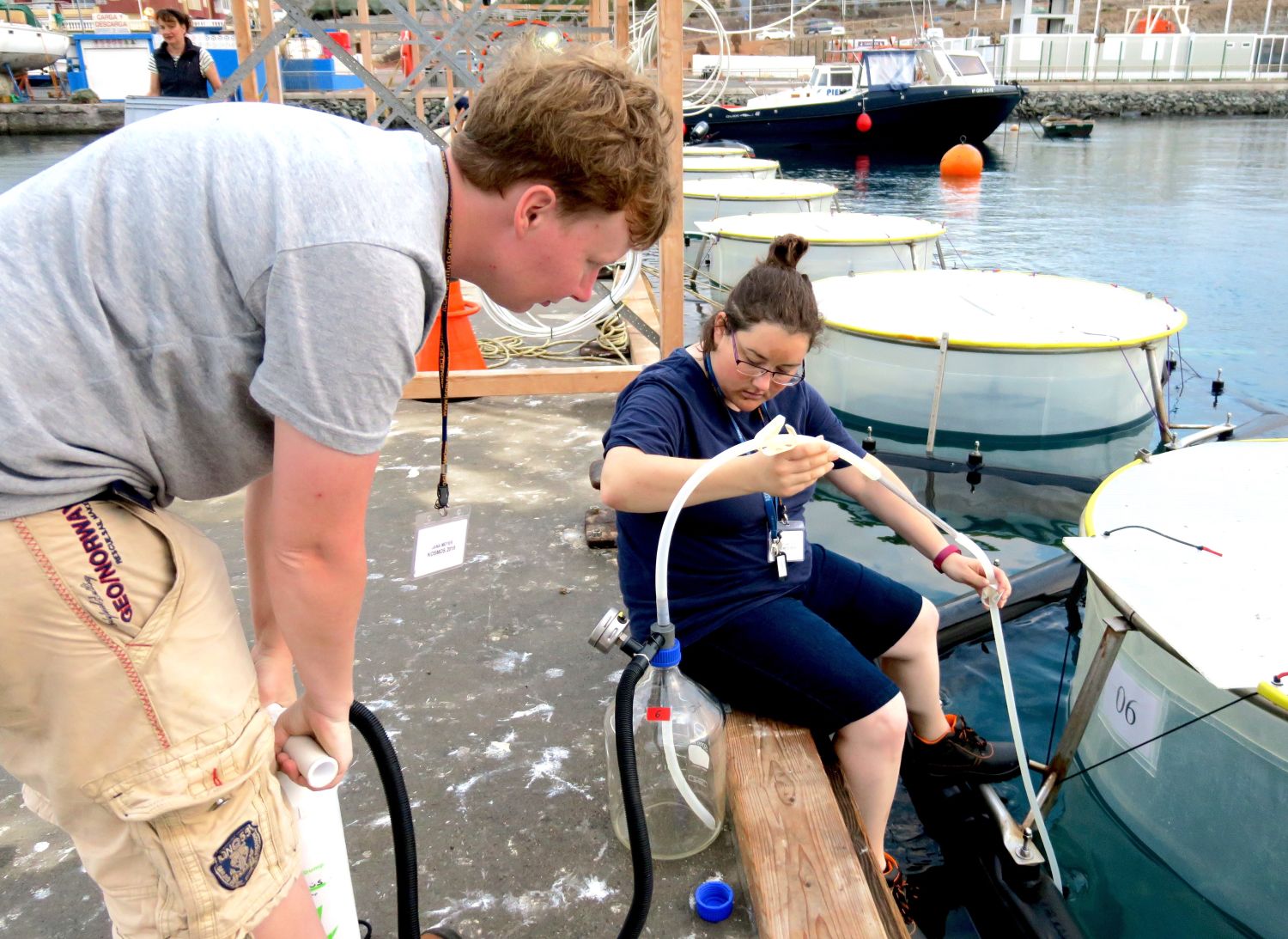First day sampling

The night before sampling you don’t leave the research station PLOCAN without having put your sampling equipment that is needed for the next day beneath the stairs. This is the most important rule for that evening.
The next day. 05:30 AM. The alarm rings. I look at my watch and realise that indeed, I have to get up. As soon as I walk along the ocean to PLOCAN all tiredness is gone. Every time I hear the waves and see the ocean I know what I am doing it all for and that it is my biggest passion. The sky is sprinkled with thousands of stars. At 07:00 AM we can enter PLOCAN and start the day with loading all sampling equipment into the van. Down at the pier we lower the gangway and carefully take all sampling gear across. First step at the pier is to put the safety shoes on. We are not allowed to do any activity at the mesocosms without the required safety procedures. Life vests are provided too. Then the mesocosms are drawn towards the pier.
Sampling starts with the early birds: the team collecting the sediments. Using tubes and a pump we collect the particulate matter that has accumulated in the sediments traps into a big glass bottle. We don’t need today’s sediment samples for analysis since it doesn’t have anything to do with our experimental work. But they need to be removed. The day directly after the filling of the mesocosms is a bit problematic. There is a lot of dust and sand in the water. And indeed, mesocosms 4 and 7 are giving trouble. If possible we would like to avoid a diving operation. So we try everything: using a different pump, using a different tube etc. But the mesocosms remain stubborn. A bit later during sampling the divers manage to go in and remove the sediments stuck. Once the sediments have been sampled it’s time for the fluoroprobe. Carefully we uncover a part of the mesocosms and lower the fluoroprobe with a manual pulley. Then the mesocosms are covered again until the next sampling team arrives. The reward for the first sampling team is the magnificent sunrise on the horizon.

The second sampling step is the tube and CTD team. Here samples for most other parameters are collected: nutrients, chlorophyll, carbonate chemistry, DMS, osmolytes, sinking velocity, respiration of sinking matter, primary production etc. The team arrives and starts at 08:00. One person per tube team has to get into a suit that prevents any hairs or particles from falling into the mesocosms during sampling. We literally look like astronauts!!! Via the tubes the samples are collected. The first sampling days always take a bit longer, because us students need to learn and practice the know how of this sampling technique. This takes some time. The last sampling team starts at 09:00 with the nets, collecting micro- and mesozooplankton.

At 11:00 the sampling is completed and the samples are taken to PLOCAN. Every hand is needed to take the samples out of the van. Then everything is distributed into the different laboratories or where needed – e.g. for nutrients and carbonate chemistry - taken to the cold room. Everyone is busy now. It looks like an ant nest. People running around, back and forth to process the samples as soon as possible, either for direct analysis or storage for later analysis. Everyone is excited and curious to see what communities we have enclosed in the mesocosms. However, we need to be a bit patient. Sample analysis takes time. But hopefully we have the first preliminary data for the first sampling day soon and lift the curtain to the newest edition of the mesocosm show called ‘’Ocean art up Si* 2019’’….
